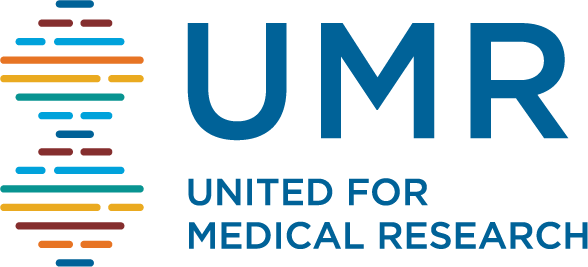November 18, 2024
On November 18, 2024, UMR wrote to Congressional Leadership urging Congress to swiftly pass a Fiscal Year 2025 year-end spending bill — and one that includes at least $50 billion in base funding for the National Institutes of Health (NIH). Senate Appropriations Committee Chair Patty Murray and Ranking Member Susan Collins, and House Appropriations Committee Chair Tom Cole and Ranking Member Rosa DeLauro, were copied on the letter.
The letter states:
Dear Speaker Johnson and Leaders Schumer, McConnell and Jeffries:
On behalf of United for Medical Research (UMR), which represents leading scientific research institutions and industries, and patient advocates, we strongly urge you to swiftly pass a FY 2025 year-end spending bill — and one that includes at least $50 billion in base funding for the National Institutes of Health (NIH).
NIH research funding has been a long-standing bipartisan national priority, and Congress has wisely provided increases in funding for the better part of the last decade. Because of this commitment to our nation’s health, there has been incredible progress with cures and treatments of some of our most vexing diseases. Among recent NIH funded successes:
-
- A feasibility study showing the potential of a new form of deep brain simulation (DBS) to significantly improve symptom control in Parkinson’s disease patients, through work done at the University of California San Francisco and supported through the National Institute of Neurological Disorders and Stroke (NINDS) and The BRAIN Initiative.
- Genetic discoveries are improving precision medicine for certain cancer treatments, thanks to research funded by NIH’s All of Us program. For example, DNA testing can now be used to help determine how much chemotherapy to give to a person with cancer.
- And NIH’s brilliant public-private collaboration is on full display as the National Cancer Institute and Thermo Fisher Scientific have partnered on an umbrella trial to leverage next generation sequencing technology in treating acute myeloid leukemia (AML) and myelodysplastic syndrome (MDS), two aggressive blood and bone marrow cancers.
Discoveries and innovations like these have real momentum and make a difference in every community in every state. However, looming budget challenges for NIH threaten the research progress that benefits American patients. Potential long-term continuing resolutions, flat funding, losing ground to inflation, and program specific cuts all threaten NIH research breakthroughs and related health outcomes. For example, funding for the popular and highly successful 21st Century Cures Act has diminished, and subsequently, programs like All of Us and the BRAIN Initiative are already cutting back. All of Us reports this year that it will have to delay enrolling a pediatric cohort of at least 100,000 children. The erosion of this critical research is one of the many reasons why strong FY 2025 funding for NIH is so urgent.
In addition to saving lives and improving health, NIH is a catalyst for economic growth. In fact, a recently released UMR report shows that, in FY2023 alone, NIH-funded research supported more than 412,000 jobs and nearly $93 billion in economic activity across the United States, making the NIH a research and economic powerhouse. Our analysis found that every $1 of NIH research funding generates $2.46 in economic activity. Further, a report issued by UMR late last year reveals the exponential impact that research funding from the NIH has on rural states.
Millions of Americans are waiting for effective treatments and cures, and NIH’s lifesaving mission is needed now more than ever. Underinvesting in biomedical research would jeopardize promising research on some of our most deadly diseases, such as cancer, heart disease, Alzheimer’s and ALS, as well as essential research on child health and development.
We implore you to provide strong, sustained and predictable funding of at least $50 billion in base funding for NIH in the FY 2025 spending package.
UMR greatly appreciates your leadership and stands ready to help you in any way.

